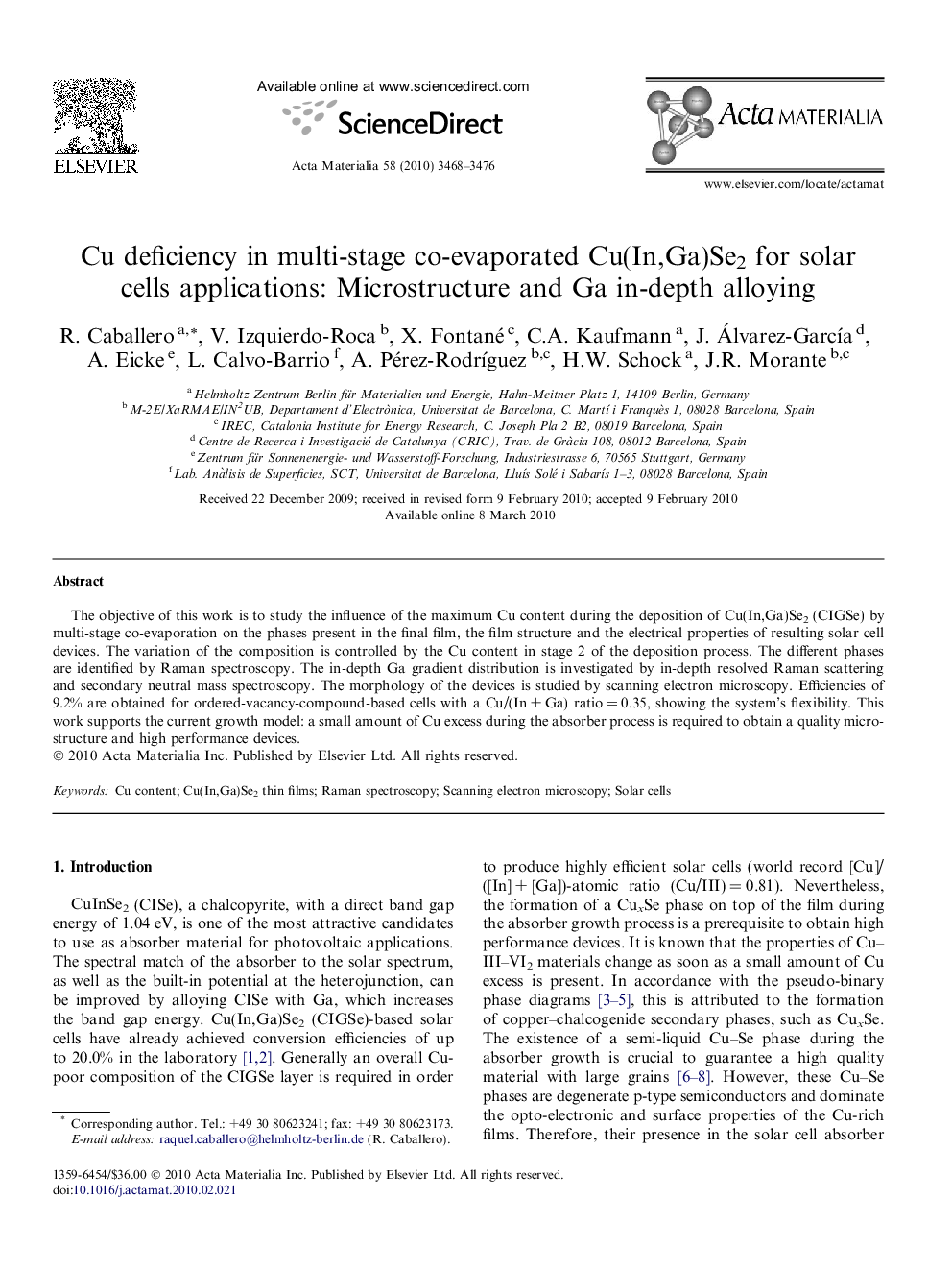| Article ID | Journal | Published Year | Pages | File Type |
|---|---|---|---|---|
| 1448000 | Acta Materialia | 2010 | 9 Pages |
The objective of this work is to study the influence of the maximum Cu content during the deposition of Cu(In,Ga)Se2 (CIGSe) by multi-stage co-evaporation on the phases present in the final film, the film structure and the electrical properties of resulting solar cell devices. The variation of the composition is controlled by the Cu content in stage 2 of the deposition process. The different phases are identified by Raman spectroscopy. The in-depth Ga gradient distribution is investigated by in-depth resolved Raman scattering and secondary neutral mass spectroscopy. The morphology of the devices is studied by scanning electron microscopy. Efficiencies of 9.2% are obtained for ordered-vacancy-compound-based cells with a Cu/(In + Ga) ratio = 0.35, showing the system’s flexibility. This work supports the current growth model: a small amount of Cu excess during the absorber process is required to obtain a quality microstructure and high performance devices.
